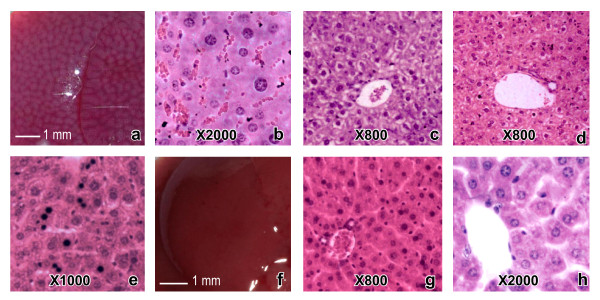Figure 2.
Gross and histopathological changes caused by H. hypnale, H. nepa and H. zara venoms in mouse livers. (Note: the pathological changes caused by the three Hypnale venoms were similar. The dose and the type of venom led to each pathological change in representative photographs are mentioned within the parenthesis) Gross (a: 2.5 μg/g dose of H. hypnale venom) and histopathological (b: 2.5 μg/g dose of H. hypnale venom) appearances of a highly congested liver (note the highly congested hepatic sinusoids). Vacuolar degeneration of hepatocytes in centrilobular (c: 7.0 μg/g dose of H. nepa venom) and peri-portal (d: 4.2 μg/g dose of H. zara venom) patterns. Random hepatocellular necrosis (e: 2.8 μg/g dose of H. zara venom) as evident by presence of pyknoticneuclei and eosinophiliccytoplasms in some hepatocytes. Gross (f: 0.9% sterile NaCl solution) and histological (h: 0.9% sterile NaCl solution) appearances of a control mouse liver.

